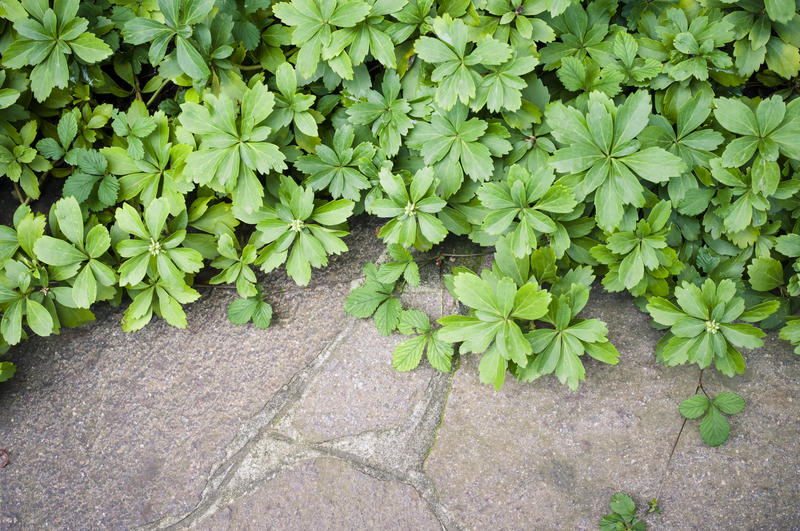Comprehensive Guide to Garden Care
Posted on 19/07/2024
Gardening is not just a hobby; it's a rewarding experience that connects you with nature and provides a sanctuary for relaxation. This comprehensive guide will walk you through essential garden care practices, helping you maintain a beautiful and thriving garden. Whether you are a beginner or an experienced gardener, these tips will enhance your green space.
Soil Preparation
Healthy soil is the foundation of a thriving garden. Start by testing your soil's pH level to understand its composition. Most plants prefer a pH level between 6 and 7. Amend the soil with organic matter such as compost or manure to improve its fertility and texture. Well-prepared soil promotes root growth and improves water retention.

Choosing the Right Plants
Selecting plants that are well-suited to your climate and soil type is crucial. Research native plants, as they are adapted to your local environment and require less maintenance. Consider the amount of sunlight your garden receives and choose plants accordingly. Group plants with similar water and light requirements together to make care easier.
Planting Techniques
Proper planting techniques can make a significant difference in plant health. Follow these steps:
1. Dig a hole twice the width of the plant's root ball but no deeper.
2. Remove the plant from its container and gently loosen the roots.
3. Place the plant in the hole, ensuring the top of the root ball is level with the soil surface.
4. Fill the hole with soil and water thoroughly.
Watering
Watering is a critical aspect of garden care. Overwatering can lead to root rot, while underwatering stresses the plants. Here are some watering tips:
- Water in the early morning or late evening to minimize evaporation.
- Use a soaker hose or drip irrigation system to deliver water directly to the roots.
- Mulch around plants to retain moisture and suppress weeds.
Fertilizing
Fertilizing provides essential nutrients that plants need for growth. Use organic or slow-release fertilizers to avoid chemical runoff and improve soil health. Follow the manufacturer's instructions for application rates and timing. Be mindful of the specific needs of different plants and avoid over-fertilizing, which can harm both the plants and the environment.
Pest and Disease Management
Regular monitoring and early intervention are key to managing pests and diseases. Encourage beneficial insects like ladybugs and lacewings, which prey on harmful pests. Use natural remedies like neem oil or insecticidal soap for minor infestations. For severe issues, consider consulting a professional. Maintain plant health through proper spacing and air circulation to reduce the risk of disease.
Pruning and Deadheading
Pruning helps shape plants, encourage growth, and remove dead or diseased parts. Deadheading, or removing spent flowers, encourages plants to produce more blooms. Use clean, sharp tools to make precise cuts and prevent damage. For trees and shrubs, prune during their dormant season, typically in late winter or early spring.
Winter Preparation
Prepare your garden for winter to ensure plants survive the cold months. Mulch perennials to protect roots from freezing temperatures. Wrap or cover sensitive plants to shield them from frost. Reduce watering as plants enter dormancy but water deeply during dry winter spells. Clean and store garden tools and equipment to prolong their lifespan.
Pros and Cons
Gardening comes with its own set of advantages and challenges.
Pros:
- Enhances mental and physical health.
- Provides fresh, homegrown produce.
- Improves air quality and promotes biodiversity.
- Offers a sense of accomplishment and relaxation.
Cons:
- Time-consuming and requires consistent effort.
- Can be costly due to tools, plants, and maintenance.
- Exposure to pests, harsh weather, and seasonal variations.
- Risk of physical strain or injury.
Tips
- Plan your garden layout thoroughly before planting.
- Rotate crops annually to prevent soil depletion and disease.
- Use rain barrels to collect water for irrigation.
- Keep a gardening journal to track plant growth and care routines.

Takeaways
Regular care and maintenance are essential for a thriving garden. Understanding your soil, choosing the right plants, and following proper techniques can significantly boost your gardening success. Embrace natural pest controls and be mindful of the pros and cons to ensure a rewarding gardening experience.
Conclusion
Gardening is a delightful pursuit that brings numerous benefits to your well-being and the environment. By understanding the principles of garden care and implementing the tips mentioned in this guide, you can create a beautiful, sustainable, and productive garden. Remember, patience and consistency are key. Happy gardening!






